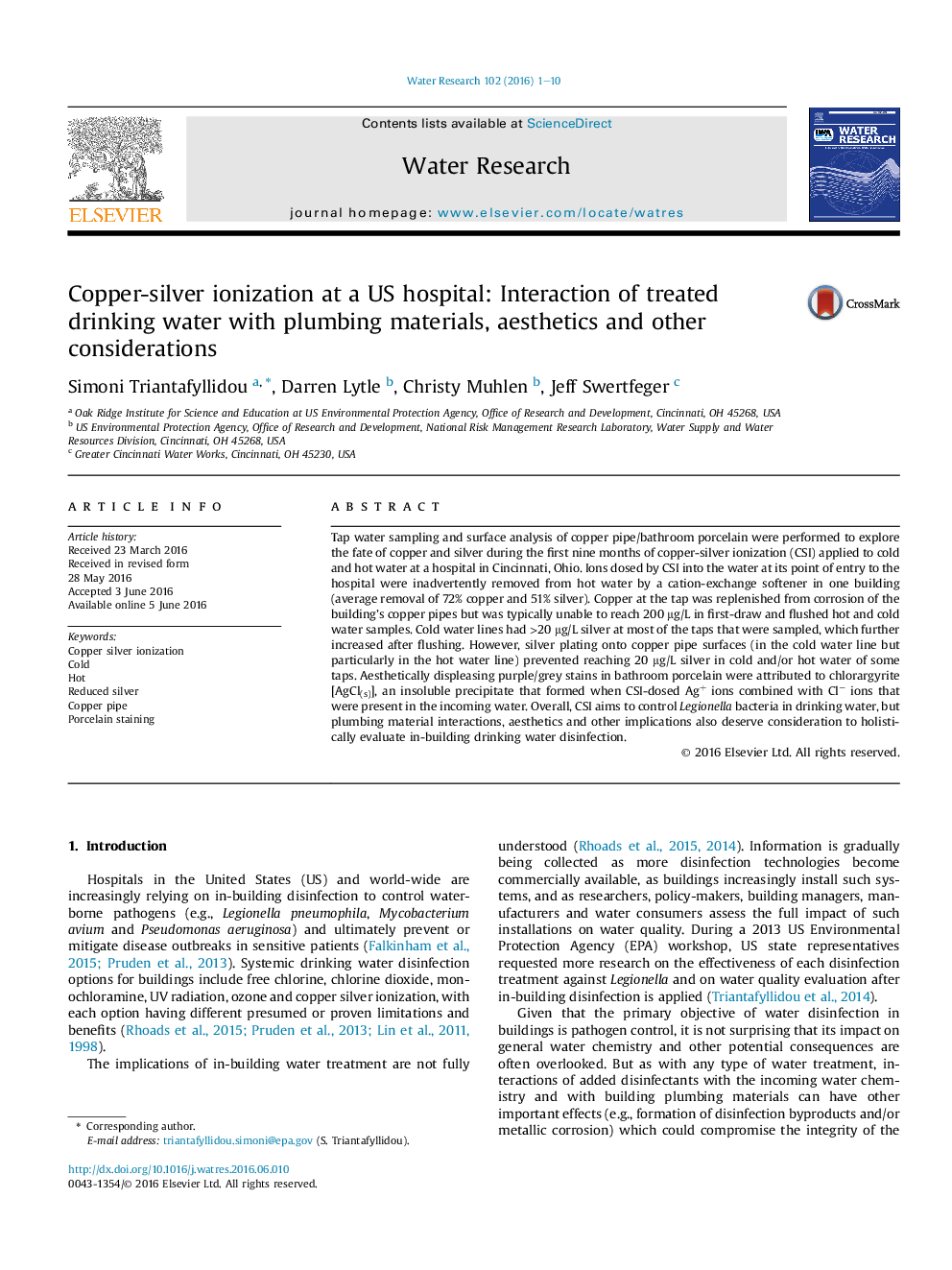| کد مقاله | کد نشریه | سال انتشار | مقاله انگلیسی | نسخه تمام متن |
|---|---|---|---|---|
| 4480834 | 1623066 | 2016 | 10 صفحه PDF | دانلود رایگان |
• Tap water sampling was supplemented with copper pipe and bathroom porcelain analysis.
• Cupric & silver ions dosed by the CSI unit were inadvertently removed by the softener.
• Reduced silver was plated onto the surface of the more anodic copper pipe.
• Extensive staining of bathroom porcelain was attributed to AgCl(s).
Tap water sampling and surface analysis of copper pipe/bathroom porcelain were performed to explore the fate of copper and silver during the first nine months of copper-silver ionization (CSI) applied to cold and hot water at a hospital in Cincinnati, Ohio. Ions dosed by CSI into the water at its point of entry to the hospital were inadvertently removed from hot water by a cation-exchange softener in one building (average removal of 72% copper and 51% silver). Copper at the tap was replenished from corrosion of the building’s copper pipes but was typically unable to reach 200 μg/L in first-draw and flushed hot and cold water samples. Cold water lines had >20 μg/L silver at most of the taps that were sampled, which further increased after flushing. However, silver plating onto copper pipe surfaces (in the cold water line but particularly in the hot water line) prevented reaching 20 μg/L silver in cold and/or hot water of some taps. Aesthetically displeasing purple/grey stains in bathroom porcelain were attributed to chlorargyrite [AgCl(s)], an insoluble precipitate that formed when CSI-dosed Ag+ ions combined with Cl− ions that were present in the incoming water. Overall, CSI aims to control Legionella bacteria in drinking water, but plumbing material interactions, aesthetics and other implications also deserve consideration to holistically evaluate in-building drinking water disinfection.
Journal: Water Research - Volume 102, 1 October 2016, Pages 1–10
